

 The South African
The South African
(incorporating Museum Review)
by P Beighton, J C de Villiers
Introduction
It is anticipated that the forthcoming centenary of the South African
War of 1899-1902 will stimulate interest in memorials of soldiers who died
in South Africa during this period. Amongst these individuals were some
sixty members of the St John Ambulance Brigade, the majority of whom died
of disease while nursing their comrades. In 1978, in an excellent and comprehensive
article, Cole-Mackintosh(1) published a list of names and affiliations
of the St John Ambulance Brigade personnel who died in South Africa and
mentioned memorials which had been located in Britain. We have now endeavoured
to locate their graves and memorials in South Africa and our findings are
presented in this article.
Historical background
The Order of St John was founded in Jerusalem during the Crusades in
the twelfth century as a religious body dedicated to the care of the sick.
Thereafter, the Knights Hospitaller of the Order had a long and eventful
history, and established links in many European countries. The British
Order was dissolved by Henry VIII in 1540 and revived in the nineteenth
century.
A military surgeon, Major Peter Shepherd, of the Royal Herbert Military Hospital, Woolwich, together with Colonel Francis Duncan, initiated the teaching of First Aid to lay persons in 1877, within the ambit of the St John Ambulance Association.(2) In the decade that followed, this group became the St John Ambulance Brigade(3), which was organised geographically into four major districts, with subordinate corps and divisions. Enthusiasm for the brigade was high in industrial and coal-mining regions, where the availability of personnel trained in First Aid and the transportation of casualties was of prime importance during the frequent accidents which occurred in the workplace.(4) The police forces, fire brigades and railways were other organisations within which the brigade thrived and the Victorian values of discipline and altruism were factors which played a role in the development of the movement and the members had a strong sense of duty and service to their fellow men.
Soon after the onset of the South African War on 11 October 1899, it became
obvious to the British authorities that the Royal Army Medical Corps would
not be able to cope with the numbers of casualties from battle and disease.
A call went out for volunteers from the St John Ambulance Brigade to serve
for six month tours in South Africa; these personnel would mainly be posted
to base hospitals, thus freeing RAMC members for service at the front.
Volunteers came forward in large numbers and, after being equipped at the
headquarters in Cripplegate, London, the first batch of 23 St John Ambulance
Brigade members sailed for South Africa on 3 November 1899 aboard the HMS
Princess of Wales.(5) Thereafter groups of SJABs (or 'Johnnies'
as they were known) were mobilised for South Africa, and approximately
1 800 served during the period 1899-1902. About 60 of these young men died
in South Africa(6), the majority from enteric (typhoid) fever, which they
contracted from their patients. This number is imprecise, as some members
lost their lives while serving with the Royal Army Medical Corps, or with
other units, during second tours of duty or following discharge in South
Africa.
The SJABs who served in South Africa were awarded a bronze medal which
bore the uncrowned head of Edward VIII.(7) Their service numbers, ranks,
initials, names and units were engraved on the rim in large block letters.
The silver Queen's South Africa Medal was also awarded with details impressed
on the rim and the unit shown as 'St John Ambulance Brigade'. Both medals
were awarded posthumously and a few examples, which were awarded to casualties,
have appeared in medal dealers' catalogues during the last decade.
Details of the names, service numbers, units, dates of death and places
of burial in South Africa were found in a number of publications.(8) The
following available sources of information were reviewed by the authors.
Book of Remembrance, St George's Cathedral, Cape Town
This illuminated work contains the names of 27 000 officers and
men who died during the South African War (1899-1902). Eighty-two names
are shown under the heading 'Volunteer Ambulances' and the remark, 'St
John Ambulance Brigade', is appended to 63 of the names. Rank is indicated,
but apart from the initials, no other details are provided. There are a
few minor errors; the name 'Ion' is misspelt 'Ton', 'Massey' is repeated
incorrectly as 'Imassey', while the 'Jones' listed does not appear to have
been a member of the SJAB. Apart from a few minor differences in spelling,
the details are generally concordant with the information which appeared
on the Clerkenwell Memorial (see below). The names are presented in alphabetical
order in the book and, as this format is of considerable practical value
to the researcher, the members of the SJAB have been listed in Table 1
(see below).
TABLE 1: ST JOHN AMBULANCE,1899-1902
Book of Remembrance,
St George's Cathedral, Cape Town
SUPERINTENDENT SERGEANT
Giddens C Plumb W
Willmore CI
PRIVATES
Alder GW Green G* Pegram WC
Applegate DJ Harris T Pearce C
Barrett JVL Hawkins, EA Pegley W*
Birtwistle SH Haywood, J Pickles GH
Bettles CR Holden GE Pickles J
Borer HJ Huggell JW Powell CH
Brock JT Houghton E Robertson F
Brown TJ Howarth TH Richardson WR
Buck P Jones RE(0) Sawford JW
Clarkson SHT King J Siddle F
Clements W Knight W Smith S
Cooper FH Lanchberry WE Stonier T
Cox W Leader FG Symes EB West
Doe B Lister H Taylor W
Ellis A Malkin JW Thornbery WH
Dixon W Maddock J Thornley W
Errington J Manship A Ton WW(&)
Farrow A Marsden A Windle T
Goodwin JH Massey R Woodhams A
Grace R
* 1st Class Sergeant
(0) possibly not a member of the SJAB
(&) Ion WW
National Monuments Council. Pretoria, South Africa
Miss J L Beater of the British War Grave sub-division of the National
Monuments Council of South Africa kindly provided a list of the names of
St John personnel who were buried and commemorated in South Africa. The
list contained names, ranks, service numbers, dates of death, places of
burial and details of known memorials in this country. Information concerning
48 SJABs was included, of whom two (Inder and Redhead) did not appear in
the Book of Remembrance.
W S Inder, On Active Service in South Africa
The most comprehensive account of the activities of the St John Ambulance
Brigade in South Africa is to be found in the book, On Active Service
in South Africa by William Sidney Inder of the Kendal Division, Westmoreland,
who undertook two tours of duty in South Africa.(9) Inder's book is based
upon his diary and it provides a vivid picture of the daily lives of the
members of the SJAB. It is of great historical importance that the names
of many SJABs are mentioned in the book (some of whom appear in photographs)
and service numbers and units are often provided. The authors of this article
have constructed a name index from this book, with the result that additional
information concerning some of the SJAB casualties is now readily available.
Clerkenwell Memorial, London
The Order of St John in London worshipped at the Priory Church,
Clerkenwell, which contained an alabaster memorial bearing the names of
members of the St John Ambulance Brigade who died of disease in South Africa.
The memorial, which was unveiled by His Royal Highness King Edward VII,
the Grand Prior, on 11 June 1902, was destroyed when the church was bombed
during a German air raid in 1941. Fortunately, a photograph was preserved
in the archives at the St John Museum in Cripplegate and a copy was made
available to the authors by the deputy curatrix, Ms Pamela Willis. Sixty-one
names are listed and, in addition to rank, the forenames and units are
also shown.
Churchyards and Gardens of Remembrance
Using the information provided by the National Monuments Council,
personal visits were made to churchyards and gardens of remembrance throughout
South Africa. Inscriptions on gravestones and monuments were transcribed
and collated with existing data.
Based on the above-mentioned sources, details of memorials to the St John Ambulance Brigade's casualties in South Africa are presented below:
CAPE PROVINCE
Cape Town:
Garden of Remembrance, Woltemade Cemetery, Goodwood
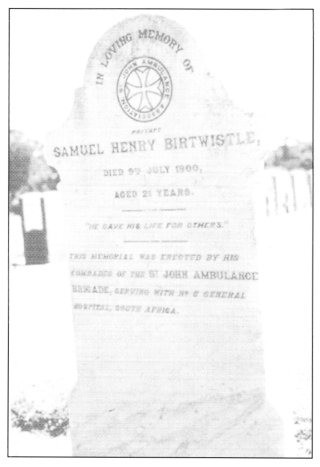
Figure 1: Woltemade Cemetery, Pte S H Birtwhistle
(Photo: Beighton & De Villiers)
West-Symes, Edward B, Pte, 1582, Leeds Corps (Died of disease, 28 April 1901). This name appears on the central memorial. The annual report of the St John Ambulance Brigade for 1911 mentions that the surgeon of No 5 District, which included West Yorkshire, was Surgeon-Major E West-Symes, MD. A family relationship is possible.
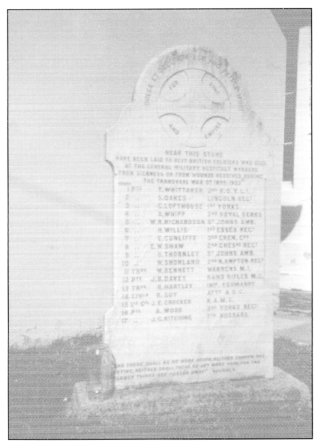
Figure 2: Memorial Stone, Methodist Church, Wynberg
(Photo: Beighton & De Villiers)
Thornley, Oliver, Pte, 334 (1334?), Royton Division (Thornley died of disease on 8 September 1900, aged 21 years, at 13 General Hospital, Wynberg, Cape Town). He has an additional headstone in the churchyard and the burial is mentioned by Inder (p 160).
Kimberley:
West End CemeteryPlumb, Percy W, Sgt, 1526, Metropolitan Corps. (He died of disease on 13 January 1901 and is buried in Row D.
Sawford, John W, Pte, 133, Wellingborough Corps. (John Sawford died of disease on 30 April 1900). He was buried previously at the Orange River Station.
Smith, Stanley, Pte, 761, Great Western Railway (attached to Metropolitan Corps). Smith died of disease on 13 July 1900 and is buried in Row F
Woodham (Woodhams), Albert, Pte, 131, Wellingborough Corps. (Died of disease, 24 March 1900). He was previously buried at Orange River Station.
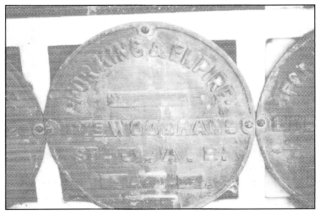
Figure 3: Plaque, Pte A Woodham (Woodhams), Kimberley
Deelfontein, Northern Cape:
Imperial Yeomanry Hospital Memorial:(10)
Willmore (Wilmore), Charles E, Sgt, 303, National Fire Brigades Union (attached). (Died of disease, I January 1901). Buried in Deelfontein Cemetery. There is an iron cross on his grave. His name also appears on the Imperial Yeomanry Hospital Memorial, which indicates that he died of double pneumonia, aged 21 years.
President Brand Cemetery
Names on the Central Memorial:
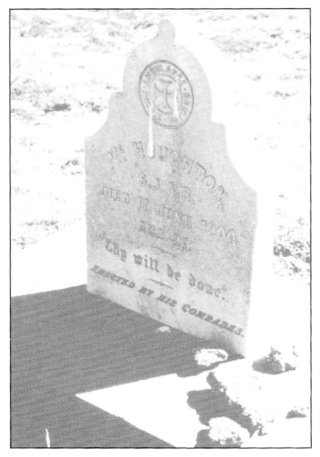
Figure 4: The headstone of Pte H Houghton, Bloemfontein
(Photo: Beighton & De Villiers)
Illsley*, C H (Died of disease, 28 May 1900). His name also on an iron cross on his grave.
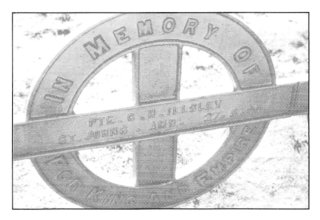
Figure 5: Detail of the headstone of Pte C H Illsley, Bloemfontein
(Photo: Beighton & De Villiers)
Inder*, Wm Sidney, Pte, 38/1311, Kendal Division. He is the author of St John Ambulance Brigade in South Africa and served at No 2 General Hospital, Wynberg,and at No 13 General Hospital, Wynberg and Johannesburg. (Died of disease - pneumonia, 7 January 1902, aged 22 years, in Bloemfontein). He was buried in Bloemfontein, but his grave has not been identified and his name does not appear on the National Monuments Council list. He was discharged in South Africa on 15 January 1901 and was serving with the Imperial Military Railways at the time of his death. In his book, his portrait appears as the frontispiece and on p 163.
Knight, William, Pte, 1201, Leeds Corps (Died of disease, 27
July 1900). His name appears on an iron cross on his grave.
Marsden, Arthur, Pte, 250, Southport Division (Died of disease,
18 April 1900). He was buried in the President Brand Cemetery or the Bayswater
Garden of Remembrance, Bloemfontein. His name appears on both central memorials.
Pearce, Charles, Pte, 563, Birmingham City Division (Died of
disease, 29 May 1900).
Seaward, A, L/Sgt (Died of disease, 18 June 1900).
Thornber, William H, Pte, 450, Burnley Corps (Died of disease,
3 June 1900). His name appears as 'Thomber' on the central memorial and
there is an iron cross on his grave.
Windle, Thomas, Pte, 693, Clitheroe Division (Died of disease,
15 July 1900). His name also appears on an iron cross on his grave.
Garden of Remembrance
Ion, William W, Pte, 786, Kendal Division. He served at No 6 General Hospital, Naauwpoort and Springfontein. (Died of disease, 13 July 1901, at Springfontein, 6 General Hospital, from enteric). He was buried in the Springfontein military cemetery, headstone grave 33 (38?) Inder states, on p 157, that 'Ion was a straightforward comrade, a good athlete and a good soldier'. The name is misspelt 'Ton' in the St George's Cathedral Book of Remembrance.
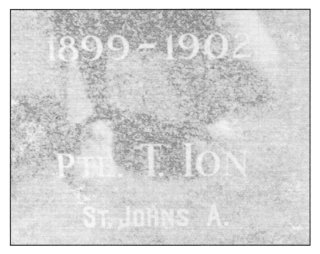
Figure 6: Detail of the headstone of Pte W Ion, Springfontein
(Photo: Beighton & De Villiers)
Williams*, W, Pte, 786 (Died of disease, 13 July 1900). He was buried in the Springfontein military cemetery. There is a headstone.
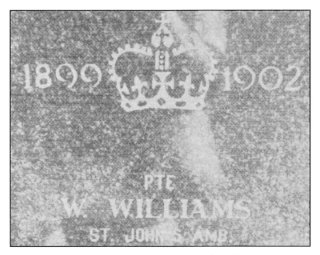
Figure 7: Detail of the headstone of Pte W Williams, Springfontein
(Photo: Beighton & De Villiers)
Dewetsdorp:
Military Cemetery
Garden of Remembrance
Names on central memorial:
Robertson, Francis, Pte, 717, Great Western Railway (attached). (Died of disease, 17 July 1900).
Garden of Remembrance
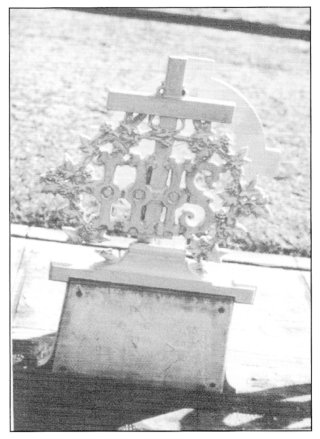
Figure 8: The headstone of Sgt C Giddens, Kroonstad
(Photo: Beighton & De Villiers)
Winburg:
Old Municipal Cemetery
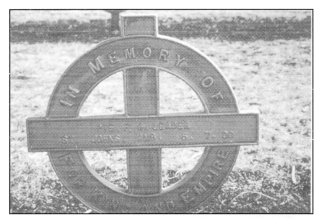
Figure 9: The iron cross on the grave of Pte F G Leader, Winburg
(Photo: Beighton & De Villiers)
TRANSVAAL (NOW GAUTENG)
Johannesburg:
Ellis, Arthur, Pte, 863, Wellingborough Corps (Died of disease, 22 August 1900).
Stonier, Thomas, Pte, 367, Tunstall Division (Died of disease, 14 July 1900).
Church Street West Cemetery
Massey, Richard, Pte, 1470, Oldham Corps (Died of disease, 2 Decemher 1900). There is a headstone on his grave (No 448). His name appears twice in the St George's Cathedral Book of Remembrance and is misspelt 'Imassey' once.
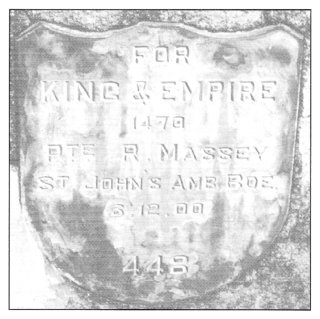
Figure 10: The headstone of Pte R Massey, Pretoria
(Photo: Beighton & De Villiers)
Garden of Remembrance
Names on central memorial:
Cox, William, Pte, 1883, Oldham Corps (Died of disease, 23 May 1901).
Siddle, Fred, Pte, 1505, Morcambe Division (Died of disease, 21 November 1900).
Primrose Garden of Remembrance
Garden of Remembrance
Newcastle:
*= This name is not in the St George's Cathedral Book of Remembrance or on the Clerkenwell Memorial
Graves not identified:
Doe, Bertie, Pte, 973, Metropolitan Corps (Wembley).
Dixon, William, Pte, Bolton Corps.
Farrow, Albert, Pte, 1762, Northampton Corps.
Harris, Thomas, Pte, Great Western Railway (attached).
Heywood (Haywood J?), Joseph, Pte, 340, Oxford Division.
Huggell, John W, Pte, 1043, Nelson Corps.
Howarth, Thomas H, Pte, 979, Edenfield Division.
Lanchberry, William E, Pte, 20, Westgate-on-Sea Division.
Lister, Higson, Pte, 511, Shipley Division.
Manship, Ernest, Pte, 1122, Sheffield Corps.
Pegley, William (1st Class Sgt), 114, Metropolitan Corps.
Pegram, William C, Pte, 818, Great Eastern Railway (attached).
Powell, Charles H, Pte, 118, Crewe Division.
Comment
The illustrations were selected in order to depict the various
styles of memorial and to represent as many cemeteries as possible. In
addition, photographs of memorials which relate to individuals about whom
there is doubt concerning the spelling of their names or their affiliations
with the St John Ambulance Brigade have also been included.
On a number of the memorials and in several of the published sources, the cause of death is given. This is almost always quoted as enteric or typhoid fever, but pneumonia or dysentery are sometimes mentioned; it is likely, however, that these latter ailments were actually complications of typhoid fever. There are no known instances of death from military action.
Acknowledgements
The authors are grateful to Miss J L Beater of the National Monuments
Council, Pretoria, for data from her files, and to Ms Pamela Willis of
the St John Museum, Cripplegate, London, for a copy of the photograph of
the Clerkenwell Memorial. The Dean of St George's Cathedral, Cape Town,
kindly gave access to the Book of Remembrance and the Vicar of the Wesleyan
Church, Wynberg, made it possible for the memorials in the church and graveyard
to be viewed. Thanks are also offered to Mrs E Briggs of Accrington, UK,
for providing information concerning memorials to Pte H C Fletcher and
to Ms Fiona Barbour for access to photographic records of graves in cemeteries
in Kimberley. The authors are most appreciative of the efforts of Gillian
Shapley who prepared the manuscript with her customary enthusiasm and efficiency.
References:
1. Cole-Mackinosh, R E, 'St John Ambulance Brigade: Boer War Casualties' in the Journal of the Orders and Medals Research Society, Vol 17(4), 1978, pp 248-55.
Footnote:
The following comment was e-mailed by Anthony Hickson in July 2004:
I see that on the web page http://samilitaryhistory.orgvol105de.html
you have shown, as "Graves not identified:"
Lister, Higson, Pte, 511, Shipley Division.
There is a gravestone to Higson LISTER in the St Paul's Churchyard in
Shipley, see http://www.hicksons.org/ByCounty/ShipleyCemetery2.html#Lister
Addendum in December 2021:
Shirley Penman e-mailed:
I have for several years now been searching for an image of the St. John“s Ambulance
Memorial which was in St. John“s Priory Church at Clerkenwell and destroyed by enemy
action in 1941.
[Despite the reference in the acknowledgements, no photograph has been located in South Africa - Ed]
Here are two images from our town (Clitheroe)
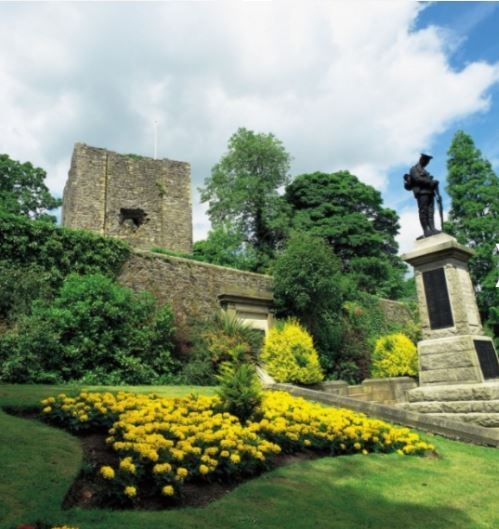
WW1/WW2 Memorial of a Grenadier Guard sculpted by Louis Roslyn.
The whole of the castle (Grade 1 listing) and castle grounds (16 acres Grade 2 ) were bought by the citizens of Clitheroe as a WW1 memorial at a cost of £9,500. £15,000 was raised and paid for the groundwork for a park and leisure garden.
The next image is of our Boer war/ South African War Memorial (Grade Two scheduled). It was unveiled in 1907 on the outside wall of our library but moved here in 1934 to the Memorial Garden.
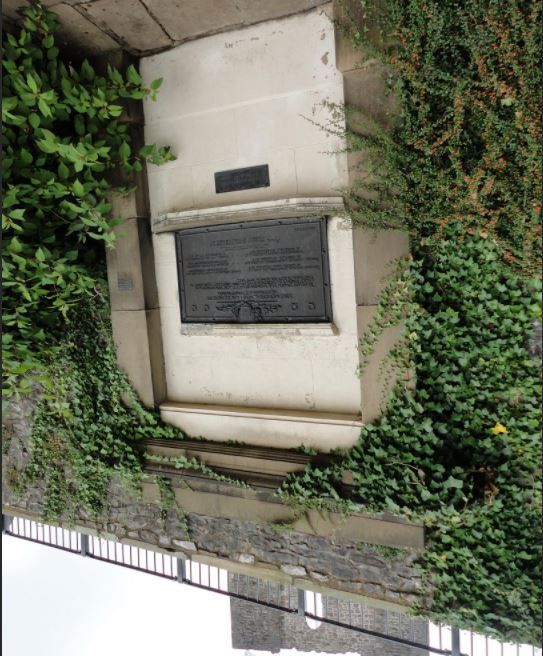
The Clerkenwell Memorial
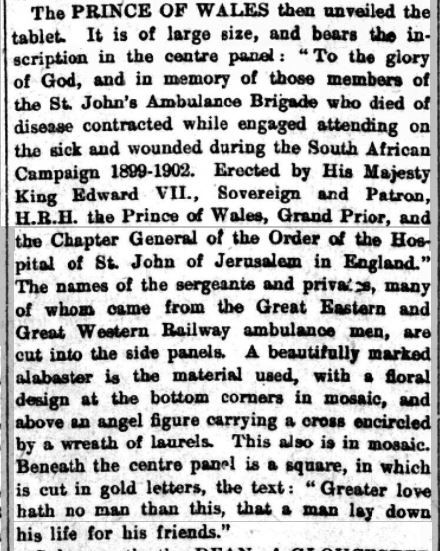
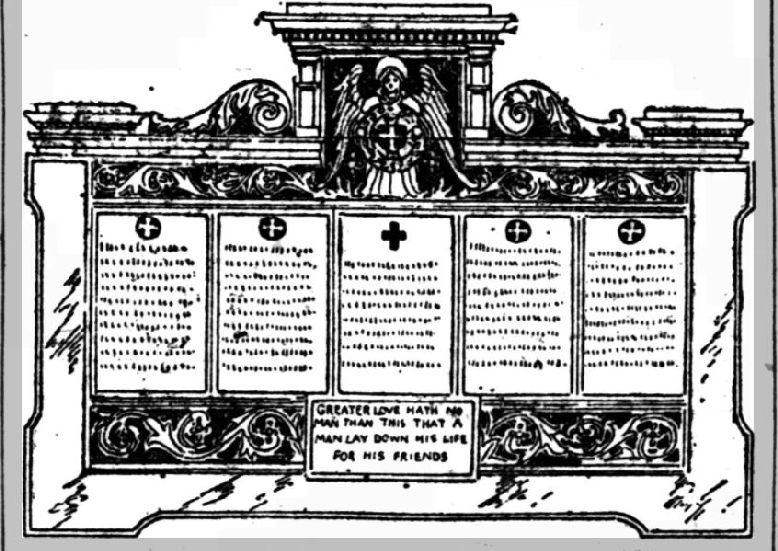
An image from Messrs. Powell who made the memorial.
Return to Journal Index OR Society's Home page
South African Military History Society / scribe@samilitaryhistory.org